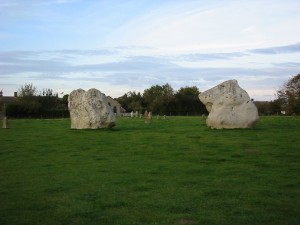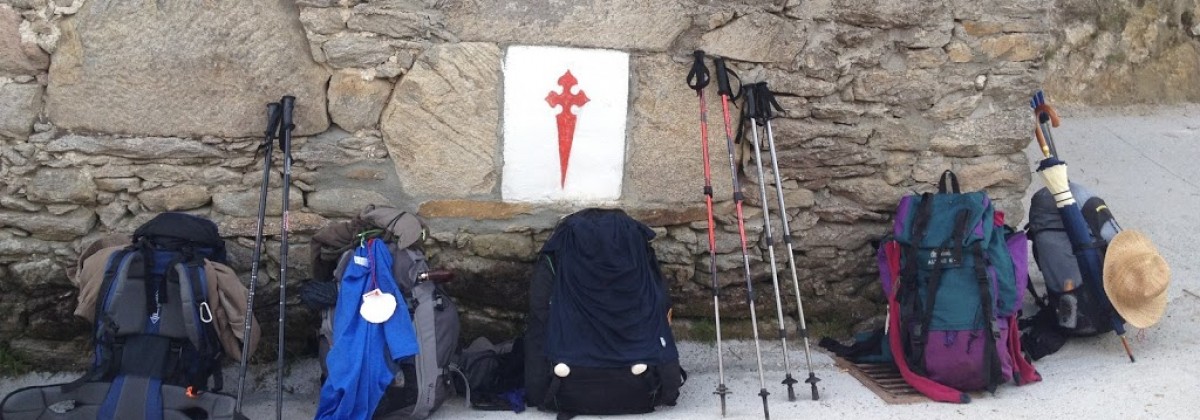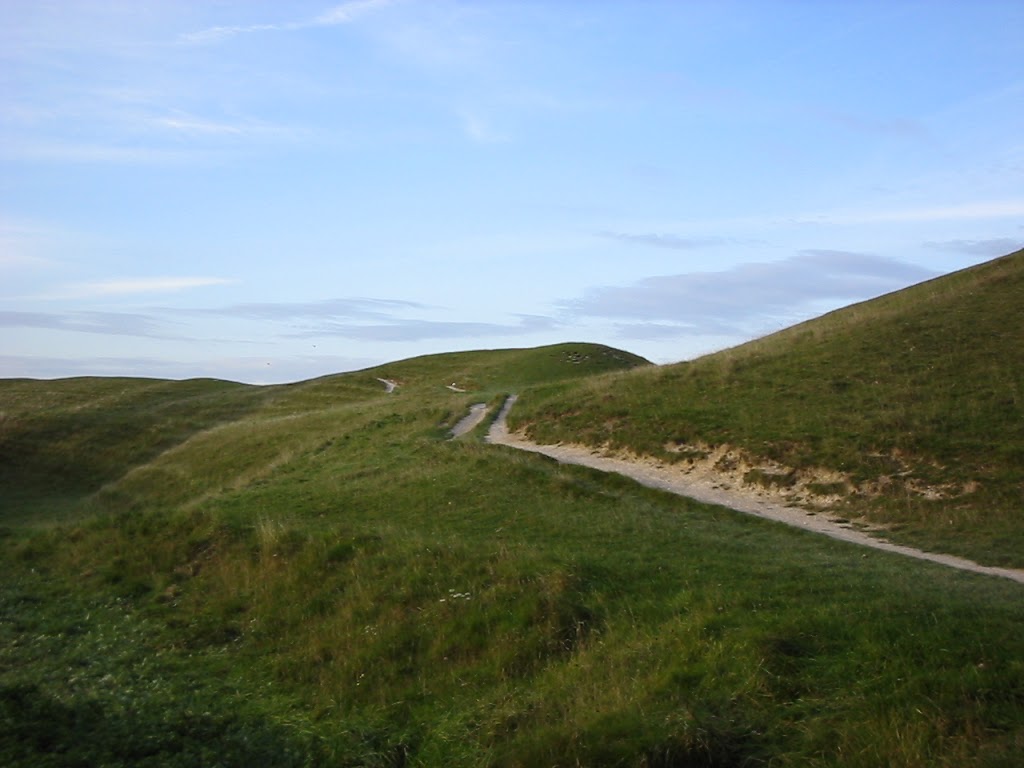 |
| pedestrian path along the henge |
both my trips to Glastonbury included visit to Avebury, a neolithic henge formed of three concentric circles that enclose a village that dates from the early medieval period. the stone circle, constructed around 2600 BCE, is the largest stone circle in Europe and was part of a human-constructed prehistoric landscape that included other monuments such as the West Kennet Long Barrow (a neolithic barrow situated on on a chalk ridge) and Silbury Hill (a 40m high, human-made chalk hill) less than two miles from Avebury. as with the more famous neighbor Stonehenge, the purpose of the Avebury ring is unknown though largely speculated to be used for ceremonies or rituals with a religious basis; evidence suggests the site was in use for over a millennium.
there’s some evidence to suggest periodic habitation at the site by Mesolithic hunter-gatherer people, who may have even constructed their own ceremonial structure, predating the stones that stand today (Mesolithic = the Age which preceded the Neolithic). anthropological studies have found significant activity from the Neolithic period; the introduction of domesticated plants and animals allowed hunter-gatherers to settle down for farming and, by extension, engage in the construction of massive sacred sites, like those around Avebury, that stemmed in part from a shift in religious beliefs.
the stability of agrarian culture allowed for ongoing projects and Avebury was built in stages. the henge — a large circular bank with internal ditch — is 420 meters across and would have required a remarkable commitment of time and labor; other henges most comparable in size are only a quarter of the size of the one at Avebury. the outer stone circle, originally consisting of 98 sarcen standing stones weighing up to 40 tons and standing over 4 meters, was likely built concurrent to the henge (or within a couple hundred years). within the outer stone circle (diameter of about 331 meters) are two additional, separate stone circles (diameters of 98 and 108 meters). an avenue of parallel stones run from one entrance of the henge and evidence exists of another avenue emanating from another entrance.
 |
| two of the standing stones |
by the Iron Age, earlier users or inhabitants of the area abandoned the site and it remained largely abandoned. there’s some evidence that people visited or used the site during the period of Roman rule and later native Briton warriors may have fortified the site to use for defensive purposes. there was intermittent habitation thereafter throughout the medieval period, with farmers constructing huts outside the stone circle and, in the 10th century, a church to serve the newly-converted Christians.
the coming of Christianity didn’t bode well for the perceived-pagan roots of the Avebury stone circle; during the 14th century villagers began pulling down the stones and burying them in prepared pits, believing the Devil had erected them for evil purposes. one of the stones, weighing some 13 tons, fell on a man during the toppling process, fracturing his pelvis and breaking his neck; he remained buried in the specially-dug hole under the stone until archaeologists excavated the hole in 1938. he had coins dating from 1320-35 in a leather pouch at his waist. the death of this man prompted the villagers to cease their toppling project, perhaps fearful that a vengeful spirit or the Devil sought revenge for destroying the site. shortly thereafter, the Black Plague struck and decimated the town’s population, further preventing any further destruction (desecration?).
the first modern mention of Avebury came from Henry VIII’s chaplain in 1451 but it wasn’t until a man called John Aubrey took interest and described it to the king that investigation took off. although Charles II told Aubrey to dig under the stones in search of burial sites, Aubrey focused his attentions on a systematic study of the site, producing a diagram that proved invaluable when villagers, heedless of the lessons of their 14th century forebears and whipped into a puritanical frenzy, smashed up many of the remaining stones for use in building materials. in the middle of the 19th century, in an effort to stem the destruction of Avebury and prevent the erection of more houses within the henge, Sir John Lubbock (later known as Lord Avebury) purchased much of the available land and encouraged others to build outside the henge.
 |
| sheep grazing within the henge |
throughout the 20th century, efforts were made to excavate, preserve, and restore the site with some previously-buried stones unearthed and re-erected. archaeologist Alexander Keiller proved instrumental in preserving artifacts, establishing a museum at the site in the 1930s, and bringing attention to the site. hundreds of thousands of people visit the site today, which is now under the stewardship of the National Trust, including contemporary pagan groups. the site is so popular for rituals among pagan groups, in fact, that they’ve had to establish a system to share access.
—
and I didn’t know any of that either of the times I visited. I had a vague notion of the scope of history and similarities to Stonehenge, but none of the specifics. I didn’t even have a very good grasp on the more impressive spiritual associations — just knew that I was impressed and it was worth the trip. we cracked jokes about the black sheep following others around, made up stories about animal-like shapes in the standing stones (one of them was a bear … the other, maybe a ram?). but reading up on it and learning about all the twists the last 4000 years have brought the site makes me even more excited to visit it again sometime in the future, perhaps as part of a tour of all the sites now under the heading of “Stonehenge, Avebury, and Associated Sites.”

